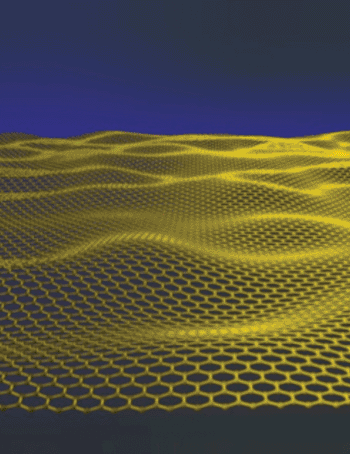Graphene Sandwich Technology Reveals Clues into Inner Workings of Proteins
By LabMedica International staff writers
Posted on 30 Dec 2013
British scientists have discovered that the most fragile, microscopic compounds can be saved from the harmful effects of radiation when under the microscope if they are “sandwiched” between two sheets of graphene. The technique could soon be the answer to being able to directly study every single individual atom in a protein chain—something that has not yet been achieved—and transform the determination of cell structure, how the immune system reacts to viruses, and help in the design of new antiviral drugs.Posted on 30 Dec 2013
Seeing the structure of some the smallest of objects at the atomic level, such as proteins and other sensitive two-dimensional (2D) substances, requires a powerful electron microscope. This is extremely problematic because the radiation from the electron beam can kill the very fragile object being imaged before any valuable data can be effectively recorded. However, by protecting fragile objects between two sheets of graphene they can be imaged for longer without damage under the electron beam, making it possible to quantitatively identify every single atom within the structure.

Image: Artist impression of a graphene sheet (Photo courtesy of the University of Manchester).
This technique has been shown to be very successful on the test case of a fragile inorganic 2D crystal, and the study’s findings were published November 26, 2013, in the journal ACSNano. The research was conducted by investigators from the University of Manchester (UK) and the SuperSTEM facility, which is located at Science & Technology Facilities’ Council (STFC) Daresbury Laboratory (UK), and funded by the Engineering and Physical Sciences Research Council (EPSRC; Swindon, Wiltshire, UK).
The team of scientists, which included Sir Kostya Novoselov, who shared a Nobel Prize in Physics in 2010 for utilizing the remarkable characteristics of graphene, was able to visualize the effects of encasing a microscopic crystal of another highly delicate 2D material, molybdenum disulfide, between two sheets of graphene. They discovered that they were able to apply a high electron beam to directly image, identify, and obtain complete chemical analysis of each and every atom within the molybdenum di-sulfide sheet, without causing any defects to the compound through radiation.
The University of Manchester’s Dr. Recep Zan, who led the research team, said, “Graphene is a million times thinner than paper, yet stronger than steel, with fantastic potential in areas from electronics to energy. But this research shows its potential in biochemistry could also be just as significant, and could eventually open up all sorts of applications in the biotechnology arena.”
Prof. Quentin Ramasse, scientific director at SuperSTEM ,added, “What this research demonstrates is not so much about graphene itself, but how it can impact the detail and accuracy at which we can directly study other inorganic 2D materials or highly fragile molecules. Until now, this has mostly been possible through less direct and often complicated methods such as protein crystallography, which do not provide a direct visualization of the object in question. This new capability is particularly exciting, because it could pave the way to being able to image every single atom in a protein chain for example, something which could significantly impact our development of treatments for conditions such as cancer, Alzheimer’s and HIV.”
Related Links:
University of Manchester
Science & Technology Facilities’ Council Daresbury Laboratory









 assay.jpg)




